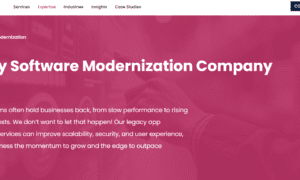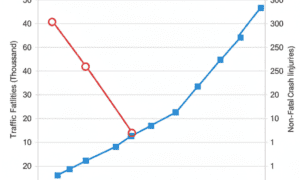Ravi Kiran Kanneganti is a certified IBM case manager solution architect, software engineer, and FileNet P8 consultant. He has acquired numerous technical and managerial skills over the last 20 years of his professional career, including case management, content navigation, web services, requirements analysis, software development, insurance, banking, engineering, and telecom.
Kanneganti currently works as a senior manager for Capgemini America Inc., a company he has worked for since 2017. His career focus is to transform complex, cross-functional processes into scalable, reliable, and intelligent business process management systems for large enterprises. While working at Capgemini America, particularly in the Financial Services Strategic Business Unit (FS SBU), he delivers a unique combination of research insight, program leadership, and hands-on engineering skills to improve workflow automation and business process management.
Kanneganti is looking to close the gap between theoretical practices and deployable solutions to create practice-based business models that improve the customer experience, lower costs, and strengthen reliability for enterprise operations.
A Manager Who Takes on Complex Enterprise Challenges
Kanneganti chooses to work on common complex challenges facing many major enterprises today, including API interoperability, real-time response constraints, incident management, and scalability in workflow automation. After all, many large organizations execute thousands of workflows spanning numerous operations, including finance, customer support, and IV service desks.
When working on solutions to these matters, Kanneganti utilizes AI-powered workflow orchestration, forecasting, resource allocation, and autoscaling in a multi-cloud environment to manage costs and meet deadlines. His research has made this quite clear.
Innovative Approaches to Address Scalability Challenges in Workflow Automation
Kanneganti’s research and innovative approaches include improving the scalability of workflow automation for large-scale organizations and enterprises. He has developed a practical framework for using predictive models, orchestration logic, and microservices to streamline workflows.
The concept is to move away from traditional, hard-coded models of business process management toward predictive, automated orchestration models. Such a system can predict problematic situations before they occur rather than react to them after they occur. That should go a long way to reducing the number of incidents in the organization, or at least prevent them from getting worse by addressing them as they occur.
His workflow orchestration framework automates incident management in enterprise IT departments through AI-powered, scalable workflows. Kaggle’s IT service management event data log contains over 240,000 entries, which was a massive help in developing a forecast model to predict the number of tickets coming and then make autoscaling decisions based on the ticket inflow volume.
The Facebook Prophet model is one example. It triggers data-driven autoscaling decisions after projected ticket inflow volumes reach a specific operational threshold, such as 400 events per day. By simulating how resource pools respond to those forecasts, the framework shows clear potential to reduce resolution times, curb escalations, and maintain steady satisfaction metrics under pressure.
Kanneganti’s work combines process mining with predictive modeling, helping teams identify temporal patterns in event traces and adjust resource allocation by priority and volume rather than a rigid sequence. That integration is an applied path from process analytics to operational decisions.
Kanneganti positions the approach in the broader BPM ecosystem, noting the evolution from heavyweight, rules-bound engines toward low-code/no-code platforms and containerized execution environments. From traditional software suites to modern engines and models, Kannegati shows how practical, modular architectures can be effectively deployed in the real world.
API Integration Barriers in Case-Based Process Management
Kanneganti has also researched barriers to API integration in case-based process management. Since many organizations use case-based process management systems, they must incorporate a responsive, fluent API. Kanneganti’s research combines decades of experience with 16 peer-reviewed studies to identify the primary challenges associated with API integration in case-based process management.
He analyzed API integration barriers across many diverse industries and sectors, including healthcare, FinTech, the public sector, and enterprise IT. Based on his research, he identified at least five key themes facing organizations: interoperability obstacles, real-time responsive issues, architectural difficulties, workflow entanglement, and documentation inadequacy.
Kanneganti made several practical suggestions and recommendations to address these issues, including the unique idea of contract-first API design, middleware implementation, semantic standardization, asynchronous processing, and centralized governance frameworks. Together, these practices create a foundation that enables case-based workflows to deliver the speed and reliability customers expect.
Why This Work Matters
Architects like Kanneganti are responsible for managing their compliance, expenses, and customer experiences. If Kanneganti’s work has shown anything, it has revealed the importance of predictability. Any organization that can master the complicated art of predictability will have an advantage in its industry.
For instance, if you can use automated technology to predict workload spikes with at least moderate accuracy and execute automated microservice orchestration, it will be much easier to make staffing and workflow capacity decisions before they get out of control.
Traditionally, most managers have waited until staffing and workflow get out of control before taking action, which makes it more difficult to fix. But now, automated technology can both preemptively predict these situations and implement solutions to prevent them. That is why businesses and organizations hire companies like Capgemini to develop these automated solutions for them.
As for Kanneganti, he is the genius behind these solutions. Even though Capgemini has been around for nearly 60 years, Kanneganti has transformed the company in ways no one ever thought possible. They even managed to bring technology and innovation to the World Rugby and Ryder Cup.
Kanneganti’s Education and Credentials
Kanneganti holds a Bachelor’s degree in Electrical, Electronics, and Communications Engineering from JNTU College of Engineering, Hyderabad. It is one of the highest-ranked and best-known engineering colleges in India. He also holds licenses and certifications from recognized institutions, including “IBM Cloud Private – Foundation Technology” and “Fellow Membership with Soft Computing Research Society.”
All these credentials prepared Kanneganti for his most fulfilling career at Capgemini Partners. It is a firm that partners with other companies to help them leverage the power and value of technology to improve and transform their businesses. Thanks to Kanneganti’s contributions to the firm, Capgemini has become the leading global technology services provider.



































